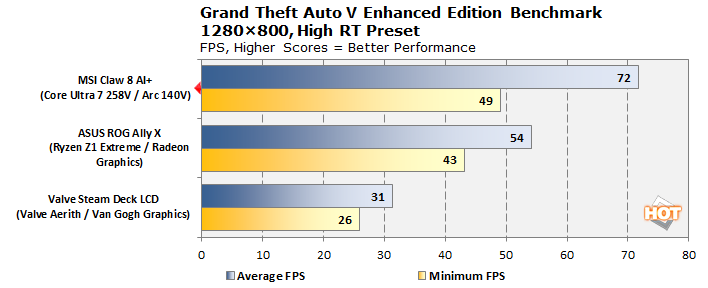Forget Nintendo's 3DS, A Glasses-Free 3D PC Gaming Handheld Is Coming
The Abxylute 3D One is a fully-featured Windows 11 PC and its Intel Arc 140V graphics performance should slot in between the AMD Radeon 890M and Radeon 870M iGPUs in many games, in-line with devices like the MSI Claw 8 AI+ that has a similar internal hardware setup. The detachable controllers also leverage pressure-sensitive linear triggers, no-drift hall-effect analog joysticks and an Xbox-style asymmetric stick layout and D-Pad. There are also dual trackpads and one back button per detachable controller.
Overall, the Abxylute 3D One seems like a flexible handheld with lots of premium features, and not a wannabe Nintendo 3DS. However, there are some caveats, especially as it relates to pricing.
Abxylute 3D One Specs and Pricing
- CPU: Intel Core Ultra 7 285V with 4 Lion Cove P-cores and 4 Skymont E-Cores
- GPU: Intel Arc Graphics 140V with 8 Intel Xe 3 Compute Units up to 2.05 Ghz
- RAM: 32GB LPDDR5X at 8533 MT/s
- Display: 16:10 spec ratio, 10.95-inch 2560 x 1440p IPS LTPS panel
- Other Display Specs: Glasses-free 3D up to 120 Hz, Brightness up to 480 nits with DC dimming, 100% sRGB color gamut coverage
- Camera: 1 RGB 5MP camera, 1 IR 1MP camera
- Wireless Technology: Wi-Fi 6E 2.2 MIMO antenna and Bluetooth 5.3 support
- I/O: 1 Thunderbolt 4 40 Gbps port, 1 USB 3.2 Gen1 Type-C port, 1 USB 3.2 Gen1 Type-A port, 1 USB-II MicroSD card slot, 1 3.5mm audio jack, 1 magnetic keyboard controller
- Operating System: Windows 11 Home
- Battery: 50 Whr capacity
- Pricing: $1799 MSRP, $1499 Early Bird via Kickstarter

The relatively large size and flexibility of the Abxylute 3D One differentiate it from most other PC gaming handhelds. We should also mention that it supports Thunderbolt 4, which opens up the possibility of using eGPUs, though using this device with an external display will obviously negate the glasses-free 3D handheld feature.
How It Works Versus Nintendo 3DS

Unlike the Nintendo 3DS, manually adjusting a depth slider is not necessary on the Abxylute 3D One, though there is still a hardware 2D-3D toggle. Instead, the glasses-free 3D effect is achieved using AI-assisted eye-tracking through the device's dual cameras. Early impressions of the 3D effect seem mostly positive. A key technical downside of Nintendo 3DS 3D implementation, besides the manual depth slider, was the need to render every frame twice—this is why enabling 3D in certain titles would drop the framerate significantly. That doesn't seem to be the case with the Abxylute 3D One, however.
The Abxylute 3D One is currently available to crowdfund on Kickstarter, with shipments expected to begin in December for the first 80 units and the rest expected in February 2026.

